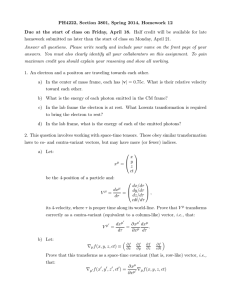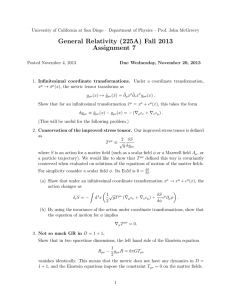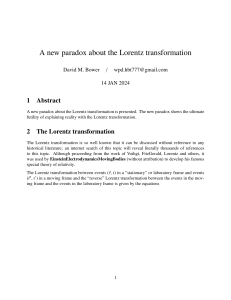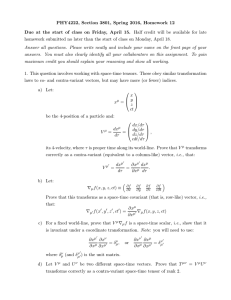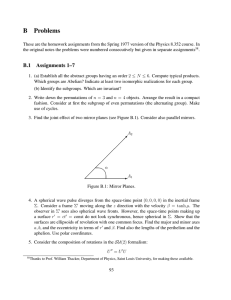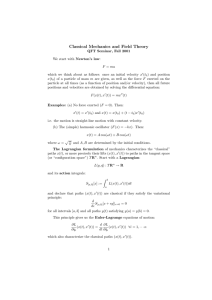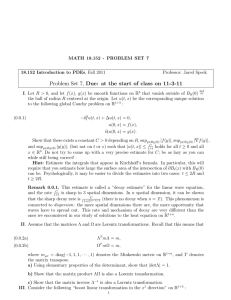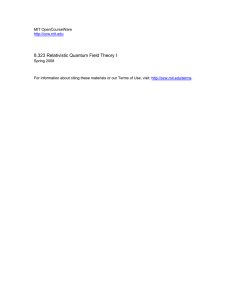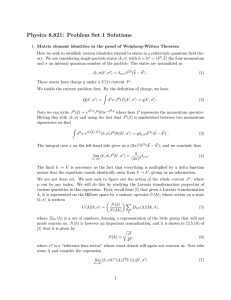Physics 315, Problem Set 9
advertisement
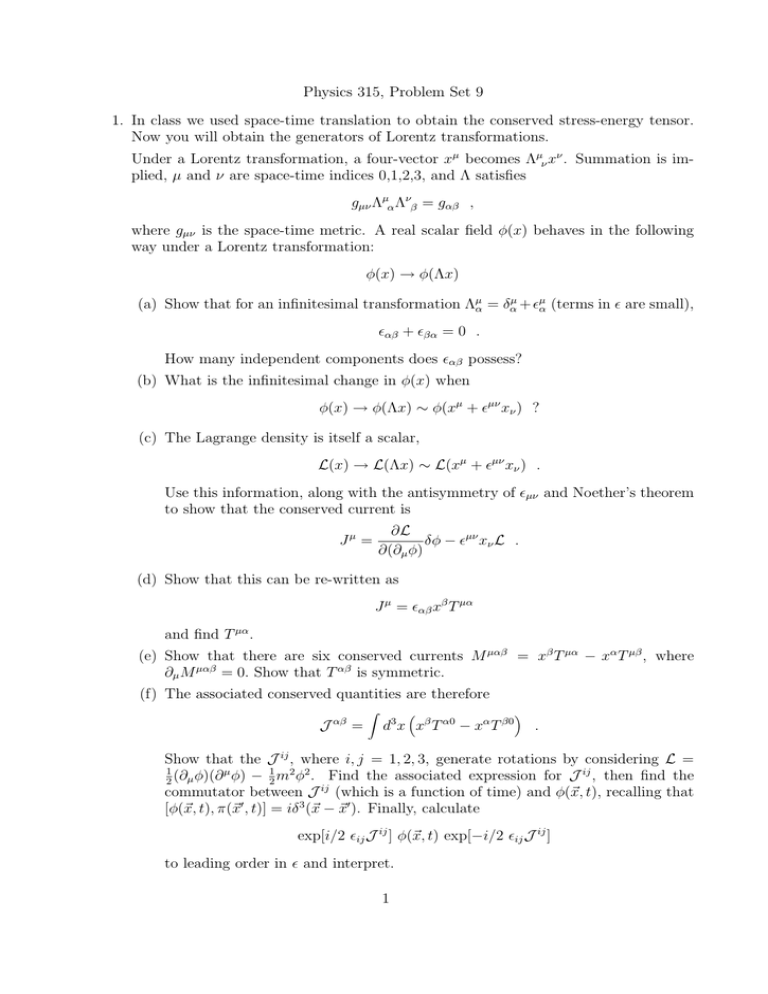
Physics 315, Problem Set 9 1. In class we used space-time translation to obtain the conserved stress-energy tensor. Now you will obtain the generators of Lorentz transformations. Under a Lorentz transformation, a four-vector xµ becomes Λµν xν . Summation is implied, µ and ν are space-time indices 0,1,2,3, and Λ satisfies gµν Λµα Λνβ = gαβ , where gµν is the space-time metric. A real scalar field φ(x) behaves in the following way under a Lorentz transformation: φ(x) → φ(Λx) (a) Show that for an infinitesimal transformation Λµα = δαµ + µα (terms in are small), αβ + βα = 0 . How many independent components does αβ possess? (b) What is the infinitesimal change in φ(x) when φ(x) → φ(Λx) ∼ φ(xµ + µν xν ) ? (c) The Lagrange density is itself a scalar, L(x) → L(Λx) ∼ L(xµ + µν xν ) . Use this information, along with the antisymmetry of µν and Noether’s theorem to show that the conserved current is Jµ = ∂L δφ − µν xν L . ∂(∂µ φ) (d) Show that this can be re-written as J µ = αβ xβ T µα and find T µα . (e) Show that there are six conserved currents M µαβ = xβ T µα − xα T µβ , where ∂µ M µαβ = 0. Show that T αβ is symmetric. (f) The associated conserved quantities are therefore J αβ = Z d3 x xβ T α0 − xα T β0 . Show that the J ij , where i, j = 1, 2, 3, generate rotations by considering L = 1 (∂ φ)(∂ µ φ) − 21 m2 φ2 . Find the associated expression for J ij , then find the 2 µ commutator between J ij (which is a function of time) and φ(~x, t), recalling that [φ(~x, t), π(~x0 , t)] = iδ 3 (~x − ~x0 ). Finally, calculate exp[i/2 ij J ij ] φ(~x, t) exp[−i/2 ij J ij ] to leading order in and interpret. 1 (g) RInterpret J 0i by finding its expression for L = 12 (∂µ φ)(∂ µ φ) − 12 m2 φ2 , evaluating d3 xT i0 by plugging in the modal expansions for π(x) and φ(x), showing that you get something proportional to ~k times a number operator (summed over all ~k’s; ignoring the infinite constant this is just the momentum operator) and explain the result. 2. The Lagrange density for free photons (which we will derive later) is 1 L = − F µν Fµν , 4 where F µν = ∂ µ Aν − ∂ ν Aµ . (a) Find the Euler-Lagrange equations appropriate for this L. (b) Show that the definition of F µν gives the expected relationship between electric and magnetic fields and the four-vector potential Aµ . (c) Apply the Euler-Lagrange equations to L to find the inhomogenous source free Maxwell equations. 2

